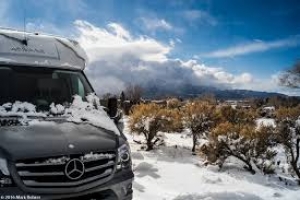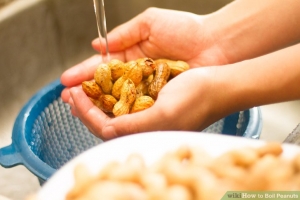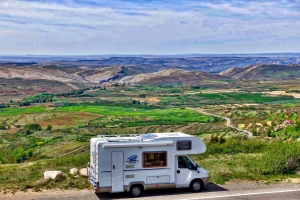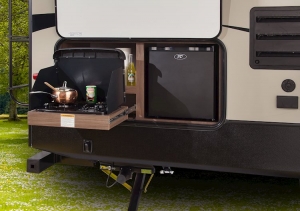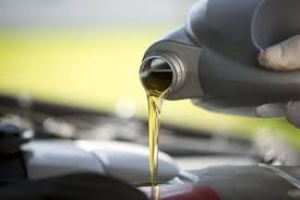Welcome to Crossing Creeks RV Resort & Spa in the heart of iconic Blairsville
Matt
Christmas Made in the South: Multi-City Holiday Craft Show
If you’re looking for a holiday decoration stamped with the words “Made in China,” you don’t want to visit Christmas Made in the South. The juried craft fair makes several stops in Georgia and nearby every November and December.
The name pretty much describes what you’ll find from the 200 or so crafters and artisans who set up shop each Christmas season at the show. All the products are handmade by Southerners.
Juried Exhibit
“Juried exhibit” means not just any crafter can come in and sell at the show. Artisans must send photos of their work to show officials. If the jurors see merit in the work—uniqueness, originality, quality, booth appeal—they invite the applicant to sell at the show. Exhibitors must display and sell the type of work reviewed by the judges.
Shows take on a regional flavor because the juries differ from place to place.
Variety of Wares
Where some regional shows might deal with a single craft, Christmas in the South welcomes a variety of works, as long as they deal with a single holiday: Christmas. When 200 or more crafters are selling in one spot, you’re bound to see all kinds of products.
Among the handcrafted items are pottery, candles, blown glass, tree ornaments, jewelry, tapestries, outdoor decorations, and painted and caned furniture, a popular category.
Get Personal
If you’re a crafter yourself, the shows offer a chance to talk to people who are good at what they do and usually are willing to talk about it. Learn new techniques. Find out what goes into a craft you might consider adding to your own repertoire.
You can personalize some products, too. Ornaments, for instance, can be ordered with your name or a family name, and maybe the year. It’s an opportunity to buy some personalized gifts for people on your Christmas list.
Little Start, Big Growth
The show began as a church event on a single Saturday. Now it is run by Carolina Shows, Inc., which stages craft fairs and festivals throughout the South. Carolina Shows has been promoting events for more than 30 years, and it imbues each show with professionalism.
If the promoters find a product that doesn’t suit the tenor and standards of the exhibit, for instance, or doesn’t reflect what the jury approved, they’ll remove it. They’ll even take down signs that fail to meet standards.
Location/Dates
Admission for all events is $7 for all three days, age 13 and older; children 12 and under enter free. For discounts, print $1 off coupons per ticket online
Two Christmas Made in the South shows remain this season in Georgia:
Venue: Macon CentrePlex
200 Coliseum Drive
Macon, GA 31217
Dates: Nov. 2-4, 2018
Times: Friday, 10 a.m. -7 p.m.; Saturday, 10 a.m.-6 p.m.; Sunday, 11 a.m.-5 p.m.
Admission:
Parking: Free
Directions: The Macon CentrePlex is a 3½- to 4-hour drive from Crossing Creeks RV Resort & Spa.
Venue: Savannah International Trade & Convention Center
1 International Drive
Savannah, GA 31421
Dates: Nov. 16-18, 2018
Times: Friday, 10 a.m. -6 p.m.; Saturday, 10 a.m.-6 p.m.; Sunday, 11 a.m.-5 p.m.
Admission: $7 admits one adult for all three days, age 13 and older; children 12 and under, free
Discounts: Print $1 off coupons per ticket online
Parking: Free
Directions: The Savannah International Trade & Convention Center is a 5¾- to 6-hour drive from Crossing Creeks RV Resort & Spa.
Another Christmas Made in the South will be in Jacksonville, Fla., during Thanksgiving weekend:
Venue: Prime F. Osborn III Convention Center
1000 Water St.
Jacksonville, FL 32204
Dates: Nov. 23-25, 2018
Times: Friday, 9 a.m. -6 p.m.; Saturday, 10 a.m.-6 p.m.; Sunday, 11 a.m.-5 p.m.
Parking: $5-10
Directions: The Prime Osborn III convention center is just under a six-hour drive from Crossing Creeks RV Resort & Spa.
There also will be a Christmas Made in the South in Ladson, S.C., just outside of Charleston, that’s actually a bit closer than Savannah:
Venue: Exchange Park Fairgrounds
9850 Highway 78
Ladson, SC 29456
Dates: Nov. 30-Dec. 2, 2018
Times: Friday, 10 a.m. -6 p.m.; Saturday, 10 a.m.-6 p.m.; Sunday, 11 a.m.-5 p.m.
Parking: Free
Directions: The Exchange Fairgrounds are a 5-hour and 20-minute drive from Crossing Creeks RV Resort & Spa.
Photo Credits: Christmas Made in the South
Going North or West with Your RV? Be Prepared for Snow
If you’re planning to venture into colder climes with your RV for some winter camping, there’s plenty you should do before you go—and while you’re there.
Hitting colder areas with your RV is a welcome activity for many. There are ski slopes or cross-country ski areas to try, maybe just the sight of some snow-covered mountains to experience, and perhaps family to visit.
Don’t take the trip lightly. You must act to protect your RV and yourself.
Protecting Yourself
Do you have a warm winter coat or jacket? Gloves that can protect you not just from the cold temperatures, but also from snow and ice? A winter hat? Really good sunglasses? Boots in case it snows? Some really warm sweaters and sweatshirts? An electric blanket for cold nights?
All may come in handy up North or out West, especially in higher elevations. Consider dressing warm when you drive instead of turning up the heat, which makes some drivers drowsy. Include a pair of thin driving gloves to ward off the cold feeling of the steering wheel without reducing grip.
If you’ve ever driven with snow on the roadside and the sun shining a day after a storm, you’ll know why good sunglasses are a must. Those conditions can be blinding.
You can get anything you need online if you can’t find it locally.
Protecting Your RV
Winter driving is tough on a vehicle. You must do quite a few things to be safe on the road and at your campsite.
Snow Shovel and Traction Aid
A collapsing shovel saves a bit of space, but make sure it’s strong and lightweight. A bag of sand is a good idea in case you get stuck on ice or packed snow. Pour the sand into a container with a locking lid to keep your storage space tidy.
Antifreeze/Coolant
Have your antifreeze/coolant checked. A 50/50 mix of antifreeze/water should protect your engine to 50 degrees below zero. That will raise the boiling point, too. Make sure hoses are sound. Carry a vial of stop-leak additive just in case a hose springs a leak. Quality duct tape can help temporarily, along with a spare gallon of antifreeze.
Windshield Washer
Put winter fluid in your washer reservoir to prevent freezing. (Never add engine-type antifreeze to it; doing so would damage your RV’s finish.) Check wiper blades. They’re cheap and easily replaced.
Water Lines
For campsite hookups, consider heated water lines so they don’t freeze. The safest routine is to fill your tank and disconnect, then store your empty hose. Reconnect when you must refill, then disconnect and empty the line again.
To keep lines from freezing, run your propane furnace and space heaters at all times when temperatures will be close to or constantly below freezing. Place conventional blankets over windows and doors where cold air may enter. (Keep a vent open, however, to allow moisture to escape.) Place small electric space heaters in the vent area to protect water lines there. Install heating pads on your fresh water tank and keep them turned on.
Waste Lines
After emptying your tank, make sure the hose is clear before storing it. Any remaining residue—including solid waste—can freeze and block the pipe. Install heating pads to both gray and black tanks—and keep them turned on. Place a small electric space heater in the wet bay.
Side Skirts
Temporary skirts help keep you and the lines warm. If there’s snow on the ground, you can pile snow along your camper to keep the wind from getting underneath. Avoid shoveling your RV in.
Fuel Treatment
If warm-climate fuel is in your tank, it may not be formulated for Northern temperatures. Pour diesel additive or, if you’re powered by gasoline, dry gas into the tank. Pour the appropriate additive into your generator tank, too.
Treat Snow with Respect
Mount snow tires on your tow vehicle or motorhome on all axles. Carry chains for the drive wheels. Towing in snow can be dangerous. Be extra cautious, driving slowly and keeping a longer distance behind vehicles. It’s easier to drive a motorhome in snow than it is to tow. If the forecast says a storm is coming, there’s no shame in deciding to leave early or stay an extra day or to.
Alternative: Winterize Your RV
You can always prepare your camper for winter and just use campsite facilities. It’s better to have goose bumps going to and from the facilities than a frozen water or waste line.
Photo Credit:Quora.com
It’s Peanut Harvest Season in Georgia
If you think Georgia runners are tailbacks who gain a lot of yardage for the Bulldogs, you don’t know much about Georgia peanuts.
Runners are often the peanuts you snack on during the game. They’re the most common type of peanut grown in the state. That’s significant, since Georgia has just under 50 percent of the peanut acreage cultivated in the United States.
October just about finishes the Georgia peanut harvest, which begins in August, so let’s talk peanuts.
Here are some other quick Georgia peanut facts:
- Runners are made into peanut butter, snack nuts and candy.
- Other varieties grown are Spanish, Valencia and Virginia peanuts.
- Because they have the largest seeds, Virginia peanuts are those typically used for roasting in the shell.
- Georgia’s Spanish peanuts are usually small and red-skinned.
- Green peanuts, which are best for boiling, must be refrigerated to avoid mold.
- The peanut is actually a legume.
- Most peanuts are grown on the Coastal Plain, south of the fall line.
To thrive, peanuts need about 22 inches of rain during the growing season and sandy soil that drains well. That’s why the Coastal Plain is prime peanut country.
Allergy Warning: If you have a peanut allergy, no preparation in the world will make peanuts safe for you. If you’re preparing food for guests and using peanuts as an ingredient, from Chinese chicken to candy or sweetbread, make sure none of your guests has a peanut allergy. It can take very little peanut content to trigger a dangerous anaphylactic reaction in those who have the allergy.

If you want to enjoy some George peanuts, here are a few suggestions:
Boiled Peanuts
For boiled peanuts, you need green peanuts, or dried peanuts that you rehydrate. The peanuts should still be in the shell. Raw peanuts for boiling often are Valencia or runners. Dried peanuts might be the Virginia type. Despite the name, most are grown in Georgia.
Boiled peanuts, unlike dried and roasted peanuts, are soft after they are cooked. They have to be refrigerated not only before they are boiled tp keep them from spoiling, but also afterwards. If you want to make a large quantity for later eating, freeze them in bags. They’ll keep for months if frozen, then microwaved to thaw.
You can boil peanuts on the stovetop, but it’s easier to boil them in a slow cooker, such as a Crockpot. Boiled peanuts are almost always salty. Popular seasonings are Old Bay or Zatarain Cajun-style.
If you use dried peanuts, rehydrate them by placing them into a pot of water, unheated, and let them soak overnight.
We’ve looked for some good recipes. Here are links to a couple:
Crock Pot Spicy Boiled Peanuts
Stovetop Salted Boiled Peanuts
Roasted Peanuts
You can certainly go out and buy roasted peanuts. They’re all over the place, from gas stations to corner stores and supermarkets. But why not roast them yourself? If you like them really well done, which processed peanuts often are not, you can turn them a savory toasted brown in your own oven.
Peanuts can be roasted in the shell or out. It’s easy to roast raw peanuts, or dried peanuts, which stay fresh longer than raw peanuts do. You can roast them with salt and/or seasonings, or plain. That’s a matter of taste. There’s no right or wrong seasoning. And here’s good news: Roasting takes less than an hour, which is a fraction of the time required for boiling.
One thing to remember about roasted peanuts is that once you roast them, they continue to cook even as they cool off. A peanut that’s hot and a bit chewy right out of the oven will be a little more done and crisper after it cools.
Here are a couple of recipes:
Roasting Peanuts—Oven, Microwave or Oil
Roasted Raw Salted Peanuts
If you want to learn more about peanuts and myriad ways to prepare them—for breakfast, snacks, natural peanut butter, or as part of your main meal—visit the Georgia Peanut Commission website.
After you’ve done the work, munch on a few peanuts with family or friends during a football game or while just socializing outside your RV.
Photo Credits: Wikihow, Quora
In Search of Georgia’s Ghosts
You can sit around a campfire and tell ghost stories for Halloween. Or you can get that creepy, crawling, cold feeling up and down your spine that comes from visiting some places in Georgia that many say are truly haunted.
So, in the spirit(s) of Halloween, we’ve gathered the details on a few ghost tours that you can experience in Georgia. Included are links to driving directions. Wherever you go ghost hunting, take a sweater. The experienced say the temperature drops when ghosts are near.
Andersonville National Historical Site
Not far from Americus is Andersonville National Historical Site, which honors the victims of the Confederate prisoner-of-war camp there. Park rangers lead respectful tours of the site, which also houses the National Prisoner of War Museum. Treatment of prisoners by both the Union and Confederacy was abysmal, but Andersonville was, by all accounts, a death camp. Many visitors say they can hear the cries of agony from some of the 13,000 Union soldiers who died at the prison, infamous for its lack of sanitation and food.
The superintendent of the prison, Capt. Henry Wirz, was hanged after the Civil War for war crimes. The hanging failed to break his neck, so his body twitched at the end of a rope until he suffocated. His ghost reportedly has been spotted roaming the grounds.
Andersonville National Historical Site
National Prisoner of War Museum
496 Cemetery Road
Andersonville, GA 31711
Phone: 229-924-0343
Cost: Free
Reservations: Not required except for groups of 15 or more
Directions: Andersonville is about a 4-hour drive from Crossing Creeks, just less than 2 hours south of Atlanta.
Decatur Ghost Tour
Starting at the Decatur Town Square, tour guide “Boo” Newell leads visitors to buildings and cemeteries that people say are haunted. She delves not just into places where paranormal events have been reported, or where she’s experienced them, but also into the city’s history. The walk is about a mile long, so it’s the right length for kids as well as adults, but it takes two hours. What does she talk about? Murder, passion, vice, war and tragedy, she writes on her website. Plan to shoot photos—many people say orbs indicating paranormal activity show up in theirs.
Decatur Ghost Tour
Address: 101 E. Court Square, Decatur, GA 30030
Phone: 864-517-0688
Hours: 7:30-9:30 p.m., Friday and Saturday year-round
Cost: $15, age 10 and older; $12, age 9 and younger
Reservations: online
Directions: Decatur Ghost Tour is just over 2 hours’ drive south of Crossing Creeks.
Roswell Ghost Tour
Here’s a chance to hunt for the supernatural and help to preserve Roswell’s historic features. A portion of every admission fee goes toward preservation projects.
Dianna Avena and other experienced paranormal investigators lead a 1-mile, 2½-hour Roswell Ghost Tour Friday, Saturday and Sunday evenings. Roswell is an equal-opportunity haunt: Spirits have been reported in mansions as well as working-class homes and abandoned mills outside of town. Participants, and not just the tour leaders, say they have captured photographic, video and audible evidence of paranormal activity—people who no one remembers seeing, a person who casts no shadow, moans of workers in the mills. There’s a reduced price for children 12 and younger, but the tour guides do not recommend that children under age 13 take the tour.
Roswell Ghost Tour
610 Atlanta St.
Roswell GA 30075
Phone: 864-517-0688
Time/Place: 8:30 p.m.-1:20 a.m, Friday-Sunday, Gazebo in Roswell Town Square
Cost: $15, age 13 and older; $10, age 12 and younger
Reservations: online
Directions: Roswell, about a half-hour north of Atlanta, is an hour and 45-minute drive from Crossing Creeks via either US 19 or U.S. 76 and Interstate 575. It’s only a few minutes from Decatur.
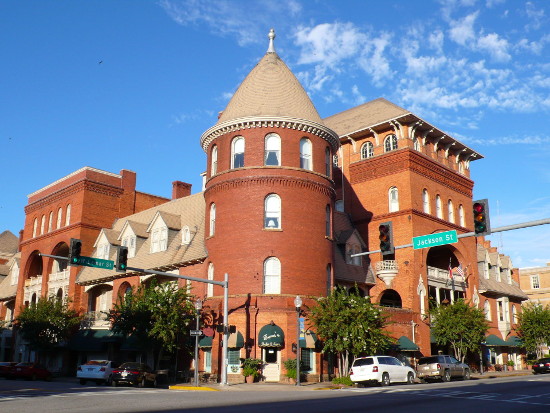 Windsor Hotel, Americus, GA
Windsor Hotel, Americus, GA
The Windsor Hotel in Americus is a Best Western Plus establishment. Perhaps the plus refers to its spirits.
There’s nothing unusual about a doorman helping hotel guests with luggage—unless it’s at the Windsor. At the ornate Victorian-era brick hotel, there’s one—Floyd, an elderly gentleman—who guests occasionally report helping them out. The thing is, the Windsor hasn’t had a doorman in years. Floyd really had worked there.
Then there’s the patter of little feet running through the hallways at night. That might be Emma, the daughter of Emily Mae, the housekeeper. The only problem is that both were slain in the 1920s when Emily Mae’s lover pushed them down an elevator shaft.
And some guests say things they own are moved inexplicably from one place to another in their rooms. There is one explanation, of course, and the hotel is glad to share it with folks on the ghost tour.
Windsor Hotel Historic Haunted Ghost Tours
Address: 125 Lamar St., Americus, GA 31709
Phone: 229-924-1555
Time: Daily, 8-9 p.m.
Cost: $12
Directions: Americus is a little over 2 hours south of Atlanta, about a 4¼-hour drive from Crossing Creeks.
Savannah Tours
If Savannah is, as reputed, the nation’s most haunted city, there are sound reasons. It was the center of the slave trade. Its population was ravaged by a yellow fever epidemic, with many victims buried in the Colonial Cemetery. And undoubtedly, women were raped and people were killed as a result of the city’s capture under Union Gen. William Tecumseh Sherman, who surprisingly spared the city from being torched. Sherman telegraphed President Abraham Lincoln to tell him he was presenting Savannah as a Christmas gift in 1864. Savannah did experience a devastating fire in 1865, although its cause has been a subject of debate.
Savannah’s status as the haunting capital may be the reason the city offers so many tours of ghost sites and graveyards. Rather than single out one, we’ll send you to a Savannah ghost tour list with offerings and prices. Some tours are walking; others are riding. Some are adults only; others are child-friendly. One even welcomes well-behaved dogs.
Directions: Savannah, a coastal city, is about a 5½-mile drive from Crossing Creeks. The quickest route is past Atlanta, so it would be easy to work in other sites in this blog while driving to or from Savannah.
Photo Credits: Wikipedia
Team Tailgate Gear for a Winning Party
Football season is upon us, and that means tailgates are as common as touchdowns.
Whether you’re tailgating outside the stadium or watching the game on your RV’s outdoor TV while you tailgate at Crossing Creeks RV Park & Resort, you’ve got to show your team colors.
You can find a host of ways to do that, beyond (and including) apparel in your team’s colors: flags and pennants of many sizes, decals for your RV, logo-emblazoned grills, a fire pit to warm up the after-game gathering, and tables that look like the playing field. You can find gear that tout the pros or college ranks.
Here are a few items to help you back the team while you’re enjoying good food, fine beverages and great company. You can order just about anything team-related online, shipped right to your door. Not available: A victory, but that’s why you al get together and cheer on every play.
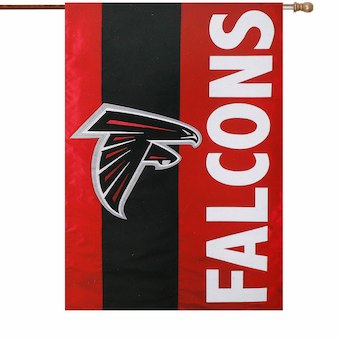 NFL Flag
NFL Flag
Fly those colors as the Falcons fly toward a Super Bowl berth. You can go understated with a garden flag, step it up with a 44-inch double-sided house flag or go all out with a 5-foot banner that mimics the Stars and Stripes. Each banner bears the Falcons’ black and red colors and the stylized Falcon logo. From nflshop.com. Cost: $14-$40.
RV Decals
Your RV may not be a ramblin’ wreck—at least we hope not—but you can let everyone know it carries genuine Yellow Jackets fans. Pick up precision-cut decals of many sizes for Georgia Tech and other schools at fanatics.com. Cost: $5-$12.
Team Grill
How ’bout them dogs? No, not the Georgia Bulldogs. The hot dogs. Or the steaks, the burgers or the salmon filets? You can cook them over a portable iron grill bearing the University of Georgia’s big “G” emblem. It’s got built-in handles for easy carrying and storage when the party’s over, and both ardor and the coals cool. From fansedge.com. Cost: About $80.
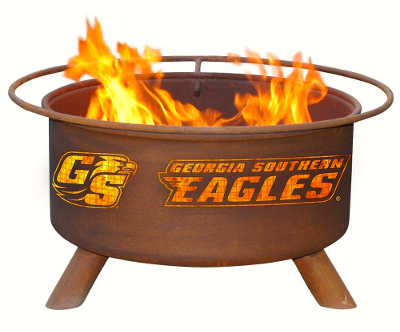 Fire Pit
Fire Pit
Even Southern nights get cool in September and October for that post-game gathering. You’ll feel a warmer glow with a fire pit that bears the Georgia Southern Eagles logo, or the emblem of another favorite team. This fire pit measures 24 inches in diameter. It includes a grate for grilling, a poker and a weather cover. The team pits are available from serenityhealth.com. Cost: About $250.
Tailgate Table
After grilling and whipping up some great side dishes, you’ll need a place to put out that tasty spread. How about an all-aluminum, non-rusting Georgia State tailgate table? At 2x8 feet, it’s got plenty of room for everything you prepare and whatever your guests contribute, but it folds to a mere 2x2 feet to slip neatly into one of your RV’s storage areas. The painted surface wipes clean faster than a tailback can hit a hole in the line. The table looks like the Panthers playing field, with logos at the 30-yard lines. Look for other schools, too, at Fansedge.com. Cost: About $200.
Removing Bug Splatter From Your RV
Bug splatter is a real problem with summer and fall driving, and the longer you wait to get the bugs off your RV, the more difficult it will be. Absolutely get rid of them before winter.
Even more aerodynamic RVs are like bricks on wheels. They’re bound to catch a lot of bugs, especially in Southeastern states, including Georgia. One look through a splattered windshield on your way to or from Crossing Creeks RV Resort and Spa in Blairsville gives you a good idea of what the bugs do to the painted front ends of your RV. They may not show as readily on paint as on a clear windshield, but the bugs are there.
Let’s look not just at how to get dead bugs off your RV finish, but also how to lessen the likelihood that they’ll become a real mess in the first place.
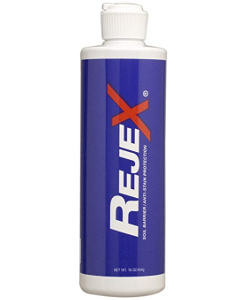 Preventing Insect Sticking
Preventing Insect Sticking
You can’t escape bug splatter, but you can reduce just how much bugs stick to paint and decals.
The best defense is to do something you ought to do anyway to maintain the value and appearance of your RV: Keep it washed and waxed. Any high-quality wax will provide a protective layer against insects.
There are other preventive products, too. RejeX Polymer Coating, for instance, coats paint and decals with a micron-thin shield. Originated to protect airplanes, it’s glossy like wax, so you can use it alone on the front of your RV. Wax or RejeX make it easier to wipe off insect residue, but wax and RejeX don’t mix, so don’t use them together on the same area. Rejex can also be used on headlight covers and windshields. Photo credit: Rejex.com.
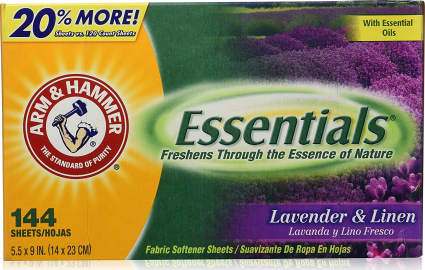 Bug Splatter Removal With Dryer Sheets
Bug Splatter Removal With Dryer Sheets
One of the traditional methods, but one that’s highly effective, is to use drier sheets—yes, the same sheets you throw in the drier to soften clothing. Do this in the shade or at least on the cool side of the RV, away from direct sunlight.
For bug removal, place a dryer sheet in a spray bottle and fill it with water. Spray the mixture onto the bugs and wipe off with—what else?—another dryer sheet. You may have to repeat, but the method gets the job done.
When you’re finished, wash and apply a new coating of wax or sealant. Photo credit: ezvidwiki.com.
Scrubbing Off Bugs
Some automotive washing mitts do a good job of scrubbing off dead bugs. A good example is the Griot’s Garage Micro Fiber Wash & Scrub Mitt. Use a bucket of water mixed with the cleaning agent you normally use to wash your RV. The mitt soaks up plenty of water for a thorough wash.
One side of the mitt has tendrils of micro fiber for routine RV washing. The other side is textured with plastic edges for bug removal. The honeycomb on the textured side bites into bug splatter and helps to remove bug residue without scratching paint. You’ll still have to scrub, and possibly repeat. Photo credits: Griot's Garage.
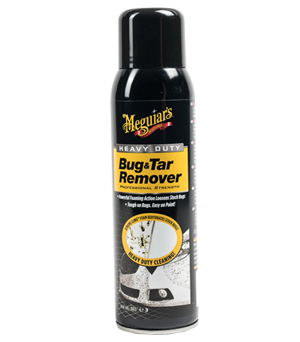 Chemical Bug Removers
Chemical Bug Removers
Chemical cleaners—Maguiar’s Heavy Duty Bug & Tar Remover is an example—are formulated to soften bugs so they can be wiped off. You know Maguiar’s is working when it foams on the surface. Different cleaners may give different results. A soft rag or sponge should do for scrubbing, if necessary. When using any chemical cleaner, it’s a good idea to use latex gloves to limit exposure to your skin.
The makers of chemical cleaners say they engineer their cleaners so they don’t harm finishes, but it’s always a good practice to follow a vigorous chemical bug cleaning with a thorough wash. Apply a new coat of wax to keep more bugs from sticking. Photo credit: Meguiar's.
Some RV owners swear by dry washes, such as Aero Cosmetics Wash Wax All. You can use it in some RV parks that ban washing with water. You can also use it during stops while traveling. Spray it on, let it work in to soften the bugs, and wipe off with a micro fiber cloth. For stubborn splatters, scrub with a wet cloth before wiping dry. It leaves a slick sheen that will help to prevent future insect sticking.
Outdoor Kitchens for Your RV
If you want to cook outside the RV—and let’s face it, that’s what most RVers do on most days—you have to set everything up: the grill, the table, the chairs.
Now you can forget about the grill. No, sandwiches are not on the menu. You’re still going to cook out, but if you have one of the many new RVs so equipped—including trailers, fifth wheels, and Class A, B and C motorhomes—you’ll have a foldout grill or kitchen that makes outdoor cooking simpler. More comprehensive cooking centers are a tailgater’s dream.
Outdoor cooking areas aren’t new to RVs, but originally the outdoor food-prep areas were the only one the RV had, as on a teardrop camper. On a bigger RV, an outdoor kitchen is in addition to, not in place of, the RV’s traditional interior kitchen. And more manufacturers are making the external ktchens available as options or standard on upscale RV models.
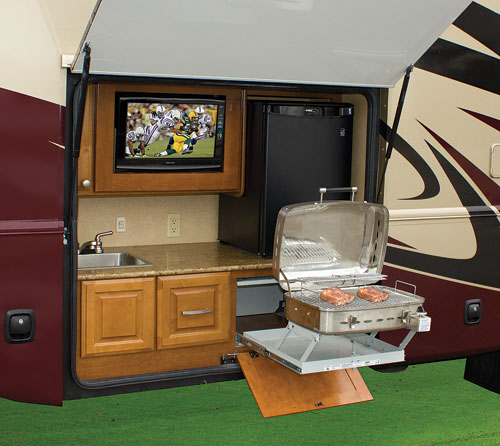 You might just be surprised by how well equipped some of the outdoor kitchens are. Few are identical, even among those offered by a single RV manufacturer.
You might just be surprised by how well equipped some of the outdoor kitchens are. Few are identical, even among those offered by a single RV manufacturer.
The more luxurious examples have not only a gas grill, but in many cases also a counter, a sink, a refrigerator, and cabinets and/or drawers for stowing away all the utensils and accessories, even dishes.
Outdoor entertainment centers have flat-panel high-definition TVs; stereo receivers, disc players and speakers; and in some cases, sinks with running water and bars, or at least a counter that can be used as a bar. There are even some kitchen/entertainment center combinations.
Basic Fold-out Kitchens
A good example of a basic kitchenette is available on some Keystone Hideout models. The kitchen has a slideout gas cooktop and a mini fridge beside it. There’s also a shelf/cubby area for storage. It’s compact and efficient. Probably best suited for breakfast, it does not include a grill.
Everything—Including the Kitchen Sink
More elaborate outdoor kitchens have everything you need to refrigerate food; cook it on a foldout stovetop or grill, or in a counter-mounted microwave; and serve with ease from the countertop. Almost any upscale outdoor kitchen will include a sink with running water, even if only a small one.
Grills and stoves may be mounted in drawers that slide out, or on arms that swing into position.
A nifty design on some outdoor kitchens is a fold-up door. The cover is flat when traveling, painted and decaled to match the side of the RV. When opened, it serves as an awning, deflecting rain and sun.
Entertainment Center
The Thor Outlaw Class A Toy Hauler has an entertainment center that seemingly has everything but the big game. It’s perfect for a tailgate bar setup. The 50-inch TV is nestled into built-in cabinetry. Below it is a faux stone countertop with a sink and running water.
Under the counter are built-in cabinets and a bar fridge. To the left of the entertainment center is a half-bath with an exterior door—perfect for accommodating party guests without having them walk through your living quarters.
Some manufacturers mount the giant TVs on slides. An end-mounted hinge allows the TV to be viewed from the kitchen, or when swung away, from the picnic table.
And Then There’s the Pull-Behind Kitchen
Maybe the neatest outdoor kitchen you’ll run across isn’t available from an RV dealer. It’s a roomy home-built mobile kitchen made from a used popup trailer, with the look of an old-time refreshment stand. It’s pulled behind a motorhome. Check it out.
Now, that is a tailgate party waiting to happen.
Photos: Courtesy of Keystone RV Co.
Changing, Recycling RV Fluids
Any RV has fluids that need to be changed periodically and disposed of properly.
Fluid change requirements in an RV don’t differ significantly from those of a car or SUV you drive every day. The biggest difference may be the number of miles driven. If your RV is on the road for only 3,000 or 4,000 miles each year, you may not reach the change intervals in terms of miles, but you should still change the fluids periodically, and the filters along with them.
A motorhome has more fluids: motor oil, antifreeze/coolant and hydraulic fluid. An RV trailer may have only the hydraulic fluid.
Here are some fluid-change guidelines.
Motor oil
This is the lifeblood of your engine. Oil must flow freely to bathe moving internal engine parts. Oil lowers friction and heat, reducing wear. For oil to flow freely, it must be relatively clean, be the right weight for your vehicle and have a clean filter. All that information is available in the owner’s manual. A service department also will know it.
Generally speaking, an oil and filter change every 4,000 to 5,000 miles is sufficient. But certain conditions place additional stresses on oil and may call for more frequent changes: towing; driving under heavy loads, in extremely hot weather, and in high altitudes; and idling for long periods.
If you don’t travel as many miles as are recommended for oil changes, change the oil yearly.
If you change the oil yourself, buy a pan to catch the old oil. Save it for recycling. (More on that later.)
Transmission Fluid
The difference of opinions on transmission oil changes is wide. Check your owner’s manual. Some sources say 100,000 miles; some say 50,000 miles. If you tow a trailer, your pickup’s tranny fluid should be changed under the “severe service” schedule, which would be more frequently. The Chevrolet Silverado “severe service” recommendation, for example, is every 45,000 miles. If you purchased an independent, extended warranty, check to make sure it does not require more frequent intervals.
It’s pretty safe to say that motor home transmission fluid should be changed under the severe schedule as well, since it’s powering thousands of extra pounds.
As a rule, check your transmission fluid seasonally, using the transmission dipstick, with the engine running. If the level is full, and if the liquid is clear and is its normal color—probably red—and doesn’t smell burnt, you’re good to go. If something is abnormal, have your transmission checked.
If you change the fluid yourself, make sure the fluid you buy is compatible. A dealer parts department or auto parts store will know the proper fluid. Catch and hold the transmission fluid for recycling.
Hydraulic Fluid
Much like transmission fluid, hydraulic fluid is usually good if it is clean, the original color and doesn’t smell burnt. A good rule to follow is to change hydraulic fluid every two years, but always if it appears out of the ordinary.
Hydraulic fluid changes are messy. Filter requirements vary. Some models have not only an external filter, but also an internal filter. Make sure you use compatible filters.
Capture and save hydraulic fluid for recycling.
Where To Recycle Used Oil
Safely and responsibly disposing of used oil isn’t as hard as you might think. The important thing is to keep it out of landfills, where it can leak and contaminate underground water and soil.
Many service stations accept used oil, including hydraulic fluid and transmission fluid, which are also classified as oil. Many service centers have setups that enable them to burn the oil, using it as heating fuel. Most Autozone parts stores and Pep Boys accept used oil, but many independently owned corner service stations do, too. Just call and ask.
Oil filters should be hot drained—kept at 60 degrees or above and allowed to drain into a container. For up to 12 hours. Drained filters can be sent to landfills in some states, including Georgia, but recycling is a more environmentally friendly practice.
Some municipalities hold annual hazardous waste collections and accept used motor oil and filters, even though normal used oil is considered regulated, not hazardous. Check your municipal government’s website or just call to find out. Hydraulic fluid, transmission oil and gear oil are all considered oil and can be recycled.
*Photo courtesy of Wikipedia
Georgia Fairs Entertain through September, October
Here come Georgia’s fall fairs. No two are alike, and all present great travel opportunities from Crossing Creeks RV Resort & Spa in Blairsville.
Fairs start in early September, with at least one fair scheduled each week through mid-November. Some are regional, some local. The biggest of all is the Georgia National Fair.
At almost any fair you can expect entertainment for all ages: food, of course, livetock competitions, cooking and baking contests, rides, concerts and fireworks.
To find your own way, here’s a list of county fairs in Georgia. Here are some highlights:
Northwest Georgia Regional Fair
- Cherokee Capital Fairgrounds
- 1060 Liberty Road, Calhoun, GA 30701
- Sept. 7-15
One of the first agricultural fairs of the season is the Northwest Georgia Regional Fair. The Cherokee Capital fairgrounds in Calhoun are less than a 2-hour drive from Blairsville. This is pretty much an old-fashioned country fair, with livestock competitions, 4-H and FFA exhibits, clowns, puppets, rides and traditional fair food. Gates open at 5 p.m. weekdays and 4 p.m. Saturday and Sunday. Admission is $5, age 5 and over. Parking is free.
Georgia State Fair
- Atlanta Motor Speedway
- 1500 Tara Pl, Hampton, GA 30228
- Sept. 28-Oct. 7
With just about every kind of family entertainment imaginable, the Georgia State Fair runs for 10 days. It’s staged inside the Atlanta Motor Speedway, so there’s plenty of parking, including limited RV parking (call 901-867-7007). The speedway is about two hours and 40 minutes from Blairsville.
Kids entertainment abounds: a petting zoo, the Puppetone Rockers audience participation show, a white tiger display, pig races, monkeys serving as jockeys and racing dogs, a circus, magic and motorcycle daredevils. There’s also a midway and a walk-through butterfly encounter. The $10 admission ($5 ages 5-12, seniors) includes all attractions, including music; rides are extra. Tuesday is ride all day for $10. Other days, ride all day is $25. Thursday, each ride is $1.
Tickets are available only at the gate.
Georgia National Fair
- 401 Larry Walker Pkwy, Perry, GA 31069
- Oct. 4-14
Sponsored by the state of Georgia, this is the biggest of the fairs. Traditional livestock shows are a Georgia National Fair highlight, with competition for cattle, hogs, sheep, goats, horses, rabbits and llamas. The Invitational Steer and Heifer Shows welcome 4-H and FFA exhibitors from Georgia, Florida, Tennessee, Alabama, North Carolina and Mississippi.
Music includes Emmy winner Peabo Bryson; Neal McCoy; a College Night ticket shared by Aaron Tippin, Sammy Kershaw and Collin Raye; 1990s and Southern Rock revivals; and gospel and Latin music. Other entertainment: pig races, antique tractors, hypnotist Tammy Barton, magicians, midway exhibits and lots of rides.
The Georgia National fairgrounds are about a four-hour drive from Blairsville, just over two hours south of Atlanta. Online ticket sales begin Aug. 24.
Elberton 12-County Fair
- 350 N. Oliver St. Elberton GA 30635
- Oct. 12-23
The regional Elberton 12-County Fair in northeast Georgia is less than a 2½-hour drive east from Blairsville. Daily admission is $5, and all-morning or all-afternoon ride tickets are available. In addition to blue-ribbon livestock contests, time-honored competitions include vegetables, jellies, jams, crafts and art. Here’s a different contest: 4Hers vie for best scarecrow. Musical acts entertain nightly, and there’s even pro wrestling.
North Georgia Agricultural Fair
- 500 Legion Drive, Dalton, GA 30721
- Oct. 18-26
One of the final nearby fall fairs is the North Georgia Agricultural Fair in Dalton. Ribbons are awarded for pies, cakes, pickles, preserves, jams, jellies, Christmas ornaments, quilts and much more. Crops judged include string and lima beans, corn, honey, nuts, peppers, tomatoes and many more categories. Livestock also is judged. Oh, and there’s a contest for voices: Karaoke preliminaries are Oct. 19 and finals, Oct. 26. There are food and rides aplenty.
Dalton is to the west of Blairsville—an hour and a half away by U.S. 76, or an hour and 50 minutes by the scenic route through south Tennessee on U.S. 74.
*Photos courtesy of Wikipedia.
Down on the Farm
So, you like to eat, do you?
Fruit juice, eggs and bacon for breakfast. Cream in the coffee. A fresh salad for lunch. For dinner, a juicy steak, maybe, grilled to perfection under the awning outside your RV, along with a baked potato and sweet corn. Ice cream with fresh berries or a Georgia peach sliced overtop for dessert. Peanuts for an evening snack with drinks.
Yeah, I know: I’m feeling hungry, too.
All that delicious food might have been purchased at a supermarket, but it started out on a farm—except for the coffee, there’s a good chance it was a Georgia farm. Lots of planning, work and care—and these days, technology— go into every farm that produces great food. Touring a Georgia farm or two to see how it’s done, and maybe even picking some fruit yourself, will make you appreciate your meal for more than how it tastes.
 Here are some places in Georgia that invite you to learn firsthand about agriculture:
Here are some places in Georgia that invite you to learn firsthand about agriculture:
White Oak Pastures
22775 Highway 27
Bluffton, GA 39824
A five-generation working family farm, White Oak Pastures raises grass-fed beef, free-range chicken, sheep, goats, turkeys, ducks, geese, guineas and hogs. It slaughters the animals in one of only two USDA-inspected on-farm abattoirs in the nation. You can dine in the White Oak Pastures farm-to-table restaurant for lunch Monday-Saturday and for diner Friday or Saturday evening. Stay in one of the on-farm cabins. The general store sells handcut meat, seasonal sausages, preserves and pickled items. Tour the farm on foot (wear boots—it’s muddy!) or prearrange a tour on horseback.
White Oak Pastures is a five-hour drive from Blairsville in the state’s south, about three hours south of Atlanta.
Vidalia Onion Museum
How sweet is this? The Vidalia Onion Museum tells you everything you wanted to know—and maybe more—about the Vidalia onion. The Vidalia onion is exceptionally sweet, partly because it is grown around Vidalia in all or parts of 20 Georgia counties where the soil lacks high sulfur content. This sweet onion was discovered quite by accident during the Great Depression. According to the USDA, you can’t call an onion a Vidalia if it’s grown in California or Pennsylvania or anyplace other than those counties, even if it’s one of the species that becomes a Vidalia onion. These onions are a rarity in that they’re hand-cultivated. You can also pick up some recipes at the museum and some delicious onions almost anywhere you travel around Vidalia from April through the summer.
The Vidalia Onion Museum is about 4 hours and 40 minutes from Blairsville, and about 2½ hours southeast of Atlanta. Admission is free of charge.
Southern Belle Farm
1658 Turner Church Road
McDonough, GA 30252
Fruit doesn’t get any fresher than when it comes right from the farm. Southern Belle Farm grows lots of it: strawberries, blueberries, blackberries and 10 varieties of peaches. You can pick your own when each crop is in season or buy pre-picked items, plus jams, honey and other products, at the farm’s Country Market. For the summer, count on blackberries, blueberries and peaches. The farm grows vegetables too. This is a real family experience. In Belle’s Barn you can see chickens, donkeys, cows, calves, goats and horses.
Southern Belle Farm is about 2 hours and 40 minutes from Blairsville. McDonough is about a half-hour southeast of Atlanta.
Photo Credit: White Oak Pastures

